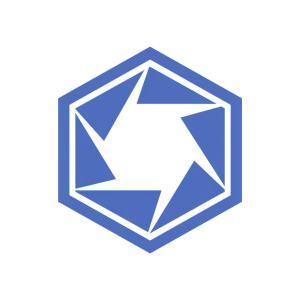MeiraGTx Announces The Lancet Publication of Data Demonstrating the Efficacy of rAAV8.hRKp.AIPL1 for the Treatment of Leber Congenital Amaurosis 4 (LCA4) Retinal Dystrophy
Rhea-AI Summary
MeiraGTx announced groundbreaking results published in The Lancet for their gene therapy treatment rAAV8.hRKp.AIPL1 targeting Leber Congenital Amaurosis 4 (LCA4), a severe form of inherited blindness. The clinical study demonstrated remarkable efficacy in all 11 treated children who were legally blind at birth.
The first cohort of 4 children received unilateral treatment, showing improved visual acuity from light perception to 0.9 LogMAR. A second cohort of 7 children received bilateral treatment, with all participants showing substantial benefits. The treatment demonstrated protection against progressive retinal degeneration without serious adverse effects.
Following these exceptional results, MeiraGTx plans to submit a Marketing Authorization Application to the MHRA under exceptional circumstances, with no additional clinical data required. The company is also engaging with the FDA for expedited approval in the United States. The treatment has received orphan drug and rare pediatric disease designations from the FDA and orphan designation from the European Commission.
Positive
- 100% success rate in treating all 11 LCA4 patients
- Significant improvement in visual acuity from light perception to measurable vision
- No serious adverse effects reported
- Expedited regulatory pathway with no additional clinical data required
- Multiple regulatory designations secured (orphan drug, rare pediatric disease)
Negative
- None.
News Market Reaction 1 Alert
On the day this news was published, MGTX gained 6.88%, reflecting a notable positive market reaction.
Data tracked by StockTitan Argus on the day of publication.
- As disclosed in the paper, 4 out of 4 young children with the AIPL1-related retinal dystrophy, LCA4, benefited substantially from unilateral subretinal administration of rAAV8.hRKp.AIPL1 with improved visual acuity, functional vision, and protection against progressive retinal degeneration
- Following the strong safety and substantial efficacy demonstrated in this first cohort of 4 children treated unilaterally, a further 7 children have now been treated bilaterally and all showed substantial benefit from treatment with rAAV8.hRKp.AIPL1
- Meaningful responses have been observed in 11 out of 11 LCA4 children treated to date with rAAV8.hRKp.AIPL1
- All 11 children treated with rAAV8.hRKp.AIPL1 between 1 and 4 years old were legally blind at birth, and all gained visual acuity after 4 or more weeks following a single one time delivery of rAAV8.hRKp.AIPL1
- Webcast today at 8:00 a.m. ET. Register here
LONDON and NEW YORK, Feb. 21, 2025 (GLOBE NEWSWIRE) -- MeiraGTx Holdings plc (Nasdaq: MGTX), a vertically integrated, clinical stage genetic medicines company, today announced the publication of results from the first-in-human interventional study to treat children with AIPL1-associated severe retinal dystrophy. The data were published in The Lancet in a paper titled, "Gene therapy in children with AIPL1-associated severe retinal dystrophy: an open-label, first-in-human interventional study". This paper presents data from the first 4 children treated unilaterally with rAAV8.hRKp.AIPL1. A further 7 children with LCA4 were treated bilaterally with rAAV8.hRKp.AIPL1 demonstrating similarly remarkable effects on vision, with all 11 of the 11 children treated who were blind at birth now having visual acuity in the treated eyes.
Retinal dystrophy due to genetic deficiency of AIPL1 causes severe impairment of sight from birth. The study published today in The Lancet sought to evaluate whether early intervention by gene supplementation therapy was safe and could improve outcomes in young children with this condition. The findings indicate that children under the age of 4 years old with AIPL1-related retinal dystrophy benefited substantially from subretinal administration of rAAV8.hRKp.AIPL1, with improved visual acuity and functional vision and evidence of protection against progressive retinal degeneration, without serious adverse effects.
The non-randomized, single-arm, clinical study conducted in the UK involved four children aged one year to three years with severe retinal dystrophy associated with biallelic disease-causing sequence variants in AIPL1. The genetic medicine was a recombinant adeno-associated viral vector, comprising the human AIPL1 coding sequence driven by a human rhodopsin kinase promoter region (rAAV8.hRKp.AIPL1). The product was manufactured under a Specials License from the UK Medicines and Healthcare products Regulatory Authority (MHRA) and made available to affected children with local ethics approval. The product was administered to one eye of each child by subretinal injection. Outcome measures included visual acuity (as assessed with standard-of-care testing as well as a novel touchscreen test), functional vision (assessed by observing and recording the children’s visual behavior and their ability to perform simple vision-guided tasks), visual evoked potentials (assessed by recording cortical electrophysiological responses to full-screen black-and-white flickering stimuli), and retinal structure (assessed with handheld OCT and widefield fundus imaging).
Prior to intervention, the children's binocular visual acuities (VA) were limited to perception of light. At a mean of 3.5 years (range 3.0 to 4.1 years), after intervention the VAs of their treated eyes improved to a mean of 0.9 logarithm of the minimal angle of the minimum angle of resolution (LogMAR) (range 0.8 to 1.0); VAs before intervention were equivalent to 2.7 LogMAR. In contrast, the VAs of their untreated eyes became unmeasurable at the final follow-up. In the 2 children able to comply with testing, an objective test of VA confirmed improvements in visual function, and measurement of visual evoked potentials showed enhanced activity of the visual cortex, specific to the treated eyes. In 3 of the children, structural lamination of the outer retina was better preserved in the treated eye than in the untreated eye, and, for all 4 children, retinal thickness appeared better preserved in the treated eye than in the untreated eye.
To date, two cohorts of children have been treated with rAAV8.hRKp.AIPL1. The first cohort of 4 children (data published in The Lancet) received treatment in one eye. A second cohort has now been treated, with 7 children (ages 1 to 3 years old) receiving sequential bilateral treatment. Meaningful responses have been observed in all 11 out of 11 LCA4 children treated with rAAV8.hRKp.AIPL1 to date.
“We are incredibly excited to see the transformative effect of treatment with rAAV8.hRKp.AIPL1 in every one of the young children who received this genetic medicine,” said Alexandria Forbes, Ph.D., president and chief executive officer of MeiraGTx. “LCA4 is one of the most severe forms of inherited blindness and the results from these 11 young children are truly remarkable. The improvements demonstrated are unrivalled in treatment benefit compared to any ocular gene therapy in any IRD. These improvements extended outside the meaningful effects on vision and result in life-changing benefits in all areas of development including communication, behavior, schooling, mood, psychological benefits and social integration.” Dr. Forbes continued, “With these truly exceptional results in hand, we are working with global regulators on expedited approval of rAAV8.hRKp.AIPL1 to provide access to babies born with AIPL1-related LCA4.”
Following recent meetings with the MHRA, the Company intends to submit a Marketing Authorization Application (MAA) under exceptional circumstances for rAAV8.hRKp.AIPL1 based on the results from the 11 treated children with no further clinical data required, and the Company has aligned on an expedited CMC package to support approval. The Company is also currently engaging with the Food and Drug Administration (FDA) to discuss a path forward for expedited approval in the United States.
rAAV8.hRKp.AIPL1 has been granted orphan drug as well as rare pediatric disease designation (RPDD) by the FDA and orphan designation by the European Commission.
A replay of the webcast will be available on the Investors & Media page of the Company’s website.
About rAAV8-hRKp-AIPL1
rAAV8.hRKp.AIPL1 is an investigational genetic medicine for the treatment of one of the most severe forms of Leber congenital amaurosis 4 (LCA4) owing to genetic deficiency of Aryl-hydrocarbon-interacting protein-like 1 (AIPL1). It is delivered via subretinal injection to children, and through a one-time administration, rAAV8.hRKp.AIPL1 is designed to deliver functional copies of the AIPL1 gene to cone and rod photoreceptors in the central retina, to restore vision.
About MeiraGTx
MeiraGTx (Nasdaq: MGTX) is a vertically integrated, clinical-stage genetic medicines company with a broad pipeline of late-stage clinical programs, including Parkinson's disease, radiation-induced xerostomia and AIPL1-associated retinal dystrophy. MeiraGTx clinical programs use targeted local delivery of small doses of genetic medicines to treat both inherited and more common conditions with severe unmet need. The successful development of the clinical pipeline is supported by our internal end-to-end manufacturing capabilities. MeiraGTx has two GMP viral vector production facilities, internal plasmid production for GMP as well as an in-house Quality Control hub for stability and release, all fit for IND through commercial supply. In addition, MeiraGTx has developed a proprietary manufacturing platform with leading yield and quality aspects and commercial readiness. Our core capabilities in viral vector and capsid optimization allow increased potency, decreased dose and significantly reduced cost of goods for our genetic medicines. MeiraGTx has developed a transformative gene regulation platform using bespoke synthetic riboswitch technology invented in-house that allows for the precise, dose-responsive expression of any transgene under the control of oral small molecules. MeiraGTx is focusing the riboswitch platform on in vivo delivery of biologic therapeutics such as the metabolic peptides GLP-1, GIP, Glucagon, Amylin, PYY and Leptin via oral small molecules, as well as cell therapy for oncology and autoimmune diseases, and long-term intractable pain. MeiraGTx has developed unique comprehensive technology capabilities to apply genetic medicine to more common diseases, increasing efficacy, addressing novel targets, and expanding access in some of the largest disease areas where the unmet need remains high.
For more information, please visit www.meiragtx.com
Forward Looking Statement
This press release contains forward-looking statements within the meaning of the Private Securities Litigation Reform Act of 1995. All statements contained in this press release that do not relate to matters of historical fact should be considered forward-looking statements, including, without limitation, statements regarding our product candidate development and anticipated milestones regarding our pre-clinical and clinical data, reporting of such data and the timing of results of data and regulatory matters, as well as statements that include the words “expect,” “will,” “intend,” “plan,” “believe,” “project,” “forecast,” “estimate,” “may,” “could,” “should,” “would,” “continue,” “anticipate” and similar statements of a future or forward-looking nature. These forward-looking statements are based on management’s current expectations. These statements are neither promises nor guarantees, but involve known and unknown risks, uncertainties and other important factors that may cause actual results, performance or achievements to be materially different from any future results, performance or achievements expressed or implied by the forward-looking statements, including, but not limited to, our incurrence of significant losses; any inability to achieve or maintain profitability, raise additional capital, repay our debt obligations, identify additional and develop existing product candidates, successfully execute strategic transactions or priorities, bring product candidates to market, expansion of our manufacturing facilities and processes, successfully enroll patients in and complete clinical trials, accurately predict growth assumptions, recognize benefits of any orphan drug or rare pediatric disease designations, retain key personnel or attract qualified employees, or incur expected levels of operating expenses; the impact of pandemics, epidemics or outbreaks of infectious diseases on the status, enrollment, timing and results of our clinical trials and on our business, results of operations and financial condition; failure of early data to predict eventual outcomes; failure to obtain FDA or other regulatory approval for product candidates within expected time frames or at all; the novel nature and impact of negative public opinion of gene therapy; failure to comply with ongoing regulatory obligations; contamination or shortage of raw materials or other manufacturing issues; changes in healthcare laws; risks associated with our international operations; significant competition in the pharmaceutical and biotechnology industries; dependence on third parties; risks related to intellectual property; changes in tax policy or treatment; our ability to utilize our loss and tax credit carryforwards; litigation risks; and the other important factors discussed under the caption “Risk Factors” in our Quarterly Report on Form 10-Q for the quarter ended September 30, 2024, as such factors may be updated from time to time in our other filings with the SEC, which are accessible on the SEC’s website at www.sec.gov. These and other important factors could cause actual results to differ materially from those indicated by the forward-looking statements made in this press release. Any such forward-looking statements represent management’s estimates as of the date of this press release. While we may elect to update such forward-looking statements at some point in the future, unless required by law, we disclaim any obligation to do so, even if subsequent events cause our views to change. Thus, one should not assume that our silence over time means that actual events are bearing out as expressed or implied in such forward-looking statements. These forward-looking statements should not be relied upon as representing our views as of any date subsequent to the date of this press release.
Contacts
Investors:
MeiraGTx
Investors@meiragtx.com
or
Media:
Jason Braco, Ph.D.
LifeSci Communications
jbraco@lifescicomms.com








